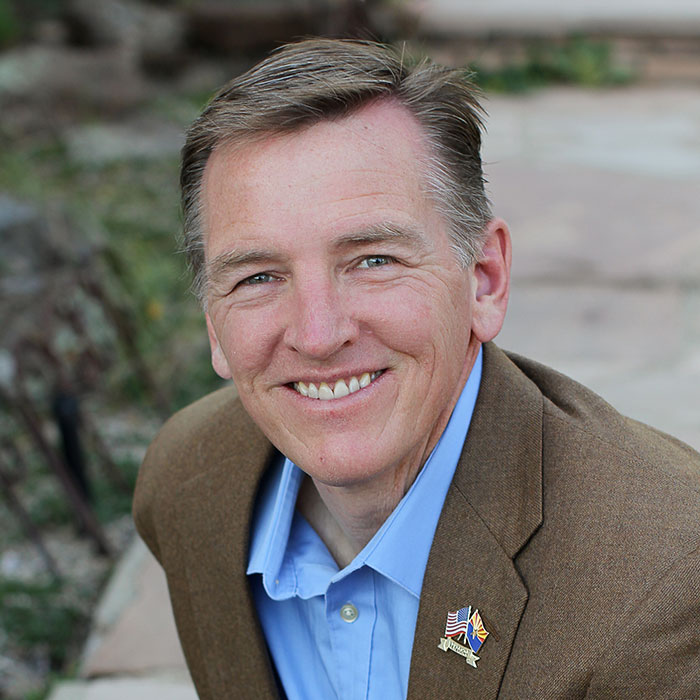Press Releases
Opening Statement: Congressman Paul a. Gosar
Washington, DC,
June 14, 2011
Natural Resources Subcommittee on National Parks, Forests and Public Lands Legislative Hearing
“Southeast Arizona Land Exchange and Conservation Act of 2011”
June 14, 2011 -- 10:00 a.m.
I would like to thank Chairman Hastings and Chairman Bishop for recognizing the importance of this legislation to my district, the state of Arizona, and our country by scheduling this legislative hearing. The need for this land exchange and ensuing copper mine was one of the very first projects brought to my attention by the people of my district. Many of those folks, excited for the economic development and sustainable growth that this project will bring, wanted this legislation introduced immediately with the start of the new Congress. However, I felt it was my duty as the new Representative of Arizona’s First Congressional District, to engage with interested stakeholders. I would like to thank all my constituents, including Terry Rambler, the Chairman of the San Carlos Apache Tribe, who is here today, for the many honest and candid conversations about this proposal. I think, and I believe Chairman Rambler does as well, that it is important to maintain an honest and respectful debate about the issues facing our state. I remain committed to working with the involved parties as they move through this process. Times are tough in my district. The unemployment rates in Pinal and Gila County sit above 10 percent. This legislation is overwhelmingly supported in Arizona because it will provide jobs and put Arizona back on the road to economic recovery. The project will support over 3,700 jobs providing for $220 million in annual wages. The total economic impact of the project on the State of Arizona is estimated to be over $61.4 billion, near $1 billion per year and another $20 billion in federal, state, county and local tax revenue. This legislation will also significantly contribute to our mineral and energy independence. Today we import 30 percent of our copper compared to 7 percent in 1993. This project will produce up to 25% of the current U.S. demand. The demand for copper is skyrocketing. A single 3 megawatt wind turbine requires 4.7 tons of copper. Renewable energy production from solar, wind, geothermal and other technologies depend heavily on copper to transmit the energy they generate. Hybrid vehicles require double the amount of copper as gas-fueled automobiles. The Department of Defense indicates that copper ranks second- behind aluminum- in defense industrial applications. The U.S. must use domestic resources to meet this growing demand and this legislation is a major step in the right direction. This legislation is not only a jobs bill, it’s a conservation bill. The land the federal government acquires in the exchange is highly-coveted recreational and conservation areas. It protects one of the last few remaining undammed rivers in the State of Arizona, the San Pedro River. The “Seven B” property contains nearly 7 miles of the lower San Pedro River, as well as over 800 acres of ancient intact mesquite bosque representing what is probably the largest old-growth mesquite forest remaining in Arizona. Dripping Springs is a superb hiking and climbing location. And nearly 100 acres of private land adjacent to the culturally important Apache Leap is being conveyed to the federal government. I have drafted this legislation to ensure this is a fair value exchange. Arizona is blessed with natural resources and we only get one opportunity to tap them. It is very important to me to ensure the taxpayer is not shortchanged. If Resolution Copper produces minerals that exceed the production assumed in the initial appraisal, the company is required to make a cash payment to the federal government. Those funds will be used for the management and maintenance of current public lands. Considering Arizona is over 60% publicly owned, this could have major benefits for our state. I’d like to address the inaccurate assertion that my legislation circumvents environmental law. Sections 4(i) and 4(j) address explicitly and implicitly compliance with Federal environmental laws and regulations pertaining to conveyances of Federal land and approval of mine plan of operations. The partners must comply with other applicable Federal laws and regulations prior to the conveyance of lands. Thus, the exchange will not go forward until major environmental requirements under the National Historic Preservation Act, Endangered Species Act, Executive Orders pertaining to wetlands and floodplains, and Hazardous Materials Surveys are met. Prior to completion of the exchange, title to the non-Federal lands must be determined to be acceptable to the Secretaries of Agriculture and Interior, and appraisals of all lands must be completed in accordance with Federal appraisal regulations and be approved by the Federal agencies. With regards to the Mine Plan of Operations, HR 1904 is clear that this plan can only be approved following preparation of a full EIS that is in accordance with NEPA and all other applicable Federal laws and regulations. Additional environmental compliance requirements will also have to be addressed at the state and local levels in order for this mine to be developed. This legislation promotes economic development in an environmentally responsible way. H.R. 1904 may be new legislation, but this initiative is not. Over the past six years, this land exchange has been subject to intensive review, public consideration and modification. Today marks the fifth Congressional hearing, the 2nd in the U.S. House of Representatives, held on this topic. It is time Congress approves the legislation and puts this vital economic project in motion. I am confident H.R. 1904 can serve as a fine example of utilizing the West’s natural resources in a way that engages all stakeholders while promoting economic development in an environmentally responsible way. I firmly believe this legislation will lead to a better future for my constituents and this country. ### |
